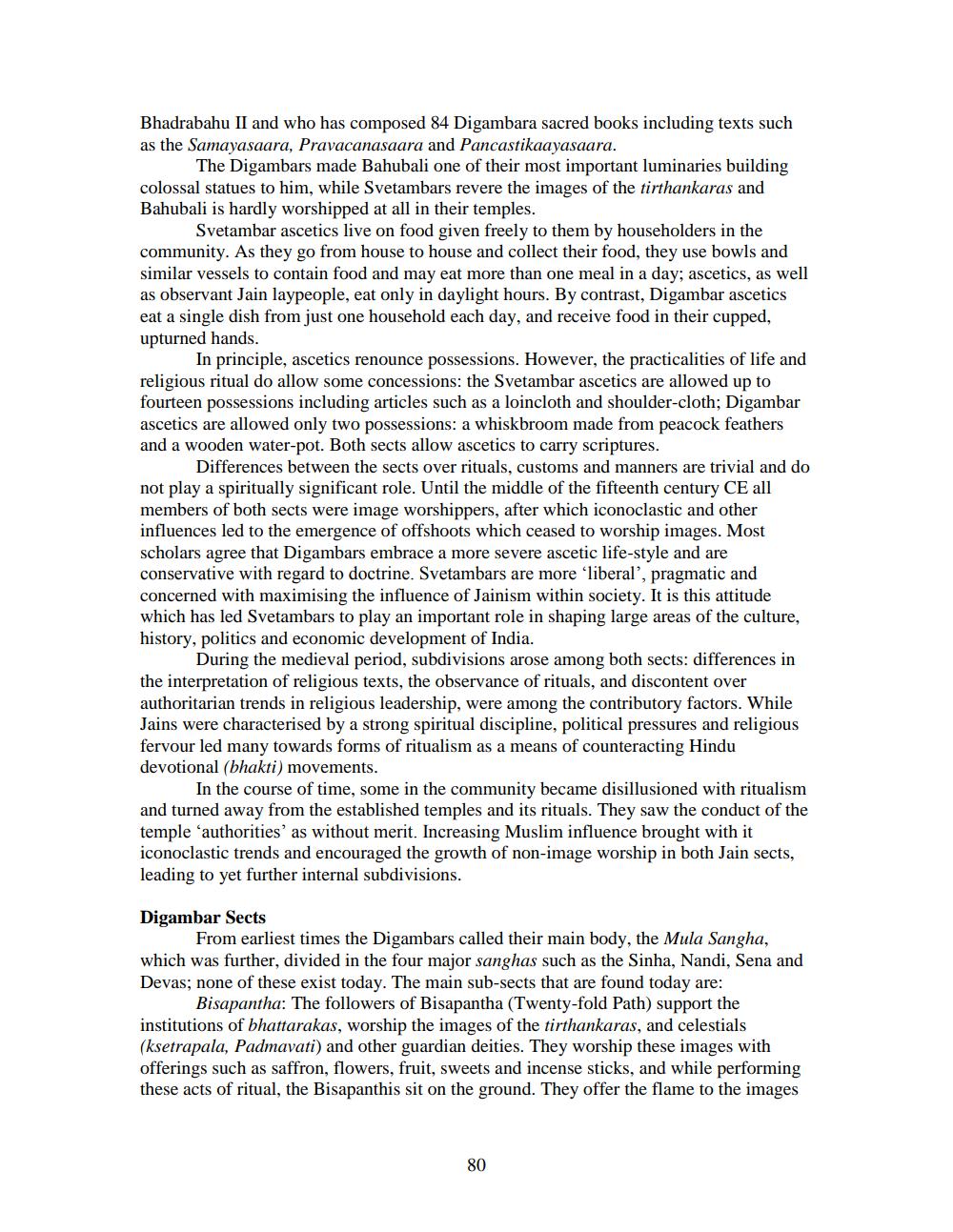________________
Bhadrabahu II and who has composed 84 Digambara sacred books including texts such as the Samayasaara, Pravacanasaara and Pancastikaayasaara.
The Digambars made Bahubali one of their most important luminaries building colossal statues to him, while Svetambars revere the images of the tirthankaras and Bahubali is hardly worshipped at all in their temples.
Svetambar ascetics live on food given freely to them by householders in the community. As they go from house to house and collect their food, they use bowls and similar vessels to contain food and may eat more than one meal in a day; ascetics, as well as observant Jain laypeople, eat only in daylight hours. By contrast, Digambar ascetics eat a single dish from just one household each day, and receive food in their cupped, upturned hands.
In principle, ascetics renounce possessions. However, the practicalities of life and religious ritual do allow some concessions: the Svetambar ascetics are allowed up to fourteen possessions including articles such as a loincloth and shoulder-cloth; Digambar ascetics are allowed only two possessions: a whiskbroom made from peacock feathers and a wooden water-pot. Both sects allow ascetics to carry scriptures.
Differences between the sects over rituals, customs and manners are trivial and do not play a spiritually significant role. Until the middle of the fifteenth century CE all members of both sects were image worshippers, after which iconoclastic and other influences led to the emergence of offshoots which ceased to worship images. Most scholars agree that Digambars embrace a more severe ascetic life-style and are conservative with regard to doctrine. Svetambars are more liberal', pragmatic and concerned with maximising the influence of Jainism within society. It is this attitude which has led Svetambars to play an important role in shaping large areas of the culture, history, politics and economic development of India.
During the medieval period, subdivisions arose among both sects: differences in the interpretation of religious texts, the observance of rituals, and discontent over authoritarian trends in religious leadership, were among the contributory factors. While Jains were characterised by a strong spiritual discipline, political pressures and religious fervour led many towards forms of ritualism as a means of counteracting Hindu devotional (bhakti) movements.
In the course of time, some in the community became disillusioned with ritualism and turned away from the established temples and its rituals. They saw the conduct of the temple "authorities' as without merit. Increasing Muslim influence brought with it iconoclastic trends and encouraged the growth of non-image worship in both Jain sects, leading to yet further internal subdivisions.
Digambar Sects
From earliest times the Digambars called their main body, the Mula Sangha, which was further, divided in the four major sanghas such as the Sinha, Nandi, Sena and Devas; none of these exist today. The main sub-sects that are found today are:
Bisapantha: The followers of Bisapantha (Twenty-fold Path) support the institutions of bhattarakas, worship the images of the tirthankaras, and celestials (ksetrapala, Padmavati) and other guardian deities. They worship these images with offerings such as saffron, flowers, fruit, sweets and incense sticks, and while performing these acts of ritual, the Bisapanthis sit on the ground. They offer the flame to the images
80




